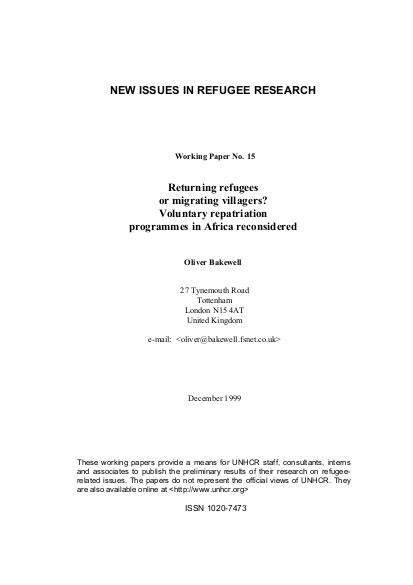
There is a sedentary bias in the concept of refugee, which implicitly suggests that people belong to a particular location as if by nature. The separation of people from their place forms one aspect of the refugee problem and the restoration of a person to their place through repatriation is often presented as the optimum solution. This simplistic narrative of refugees being able to go ‘home’ is too often employed without a critical analysis of what they conceive to be home and how it has changed since they were forced to leave. Over the last decade voluntary repatriation has been widely presented as the optimum, and often the only, durable solution to refugee problems around the world. The universal desire to return is ascribed to refugees as easily as their vulnerability, powerlessness and other such stereotypes. Like most stereotypes, it reflects a commonly observed phenomenon: in this case, that people who are forced to leave their homes very often want to go back to them. However, if such stereotypes are to be relied on to predict human behaviour and to form the basis of policy, it must be asked if they can be seen to have universal validity. This paper questions these assumptions and presents a case study of self-settled Angolan refugees in Zambia, which illustrates how repatriation programmes based on a simplistic idea of refugees returning home are likely to prove ineffective and inefficient.1 By viewing repatriation as a form of migration, the study highlights the contrast between the discourse of external agencies, who perceive repatriation as a return to normality and an end to the refugee problem, and villagers, for whom crossborder migration is a normal part of life and a way to improve their livelihoods. In the next section the paper turns to look at the nature of refugee problems and the rising star of repatriation as the ideal solution. After introducing the background to the case study, the following two sections describe the local and external views of cross-border movement and repatriation. The penultimate section shows how the external model framed in a discourse of refugee repatriation fails to address the main concerns and needs of potential migrants. The final section suggests some policies for developing repatriation plans, which arise out of the research.